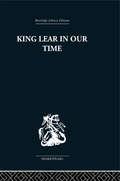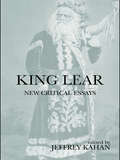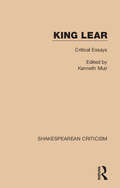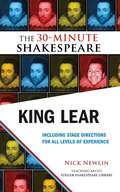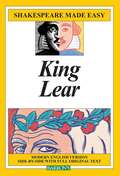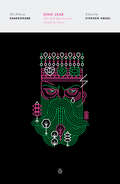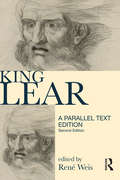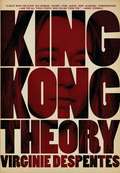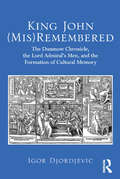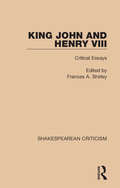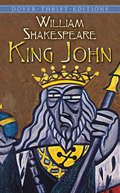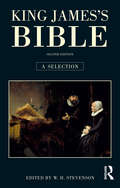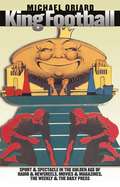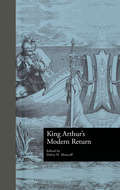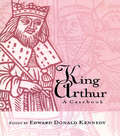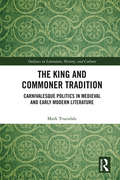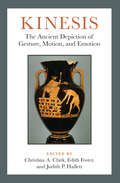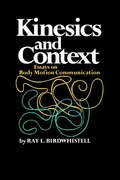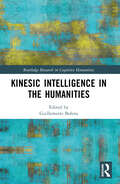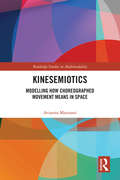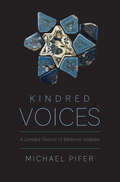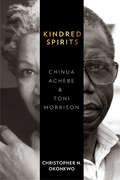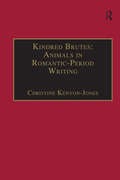- Table View
- List View
King Lear in our Time
by Maynard MackThis edition first published in 1966. Previous edition published 1965 by the University of California Press. Perhaps more than any other play of Shakespeare's King Lear has been subjected to almost totally contradictory interpretations. In the first historical section of the book the author describes the varying concepts of the play and the distortions of text and even plot that have been widely used. Garrick's playing of Lear as a pathetic and down-trodden old man. Laughton's and Olivier's versions and Herbert Blaus's theory of the 'subtext' are described and analysed. The central section of the book examines the medieval, folk and romance sources of the play. The final chapter illustrates how the action of the play and its pervading violence and evil are not explained in terms of human motive and rely for their meaning more on their effects than their antecedents. An important theme is the play's examination of society and the ties of service and family love.
King Lear and the Naked Truth: Rethinking the Language of Religion and Resistance
by Judy KronenfeldTaking King Lear as her central text, Judy Kronenfeld seriously questions the critical assumptions of much of today's most fashionable Shakespeare scholarship. Charting a new course beyond both New Historicist and deconstructionist critics, she suggests a theory of language and interpretation that provides essential historical and linguistic contexts for the key terms and concepts of the play. Opening the play up to the implications of these contexts and this interpretive theory, she reveals much about Lear, English Reformation religious culture, and the state of contemporary criticism.Kronenfeld's focus expands from the text of Shakespeare's play to a discussion of a shared Christian culture--a shared language and set of values--a common discursive field that frames the social ethics of the play. That expanded focus is used to address the multiple ways that clothing and nakedness function in the play, as well as the ways that these particular images and terms are understood in that shared context. As Kronenfeld moves beyond Lear to uncover the complex resonances of clothing and nakedness in sermons, polemical tracts, legislation, rhetoric, morality plays, and actual or alleged practices such as naked revolts by Anabaptists and the Adamians' ritual disrobing during religious services, she demonstrates that many key terms and concepts of the period cannot be tied to a single ideology. Instead, they represent part of an intricate network of thought shared by people of seemingly opposite views, and it is within such shared cultural networks that dissent, resistance, and creativity can emerge. Warning her readers not to take the language of literary texts out of the linguistic context within which it first appeared, Kronenfeld has written a book that reinterprets the linguistic model that has been the basis for much poststructuralist criticism.
King Lear: New Critical Essays (Shakespeare Criticism)
by Jeffrey KahanIs King Lear an autonomous text, or a rewrite of the earlier and anonymous play King Leir? Should we refer to Shakespeare’s original quarto when discussing the play, the revised folio text, or the popular composite version, stitched together by Alexander Pope in 1725? What of its stage variations? When turning from page to stage, the critical view on King Lear is skewed by the fact that for almost half of the four hundred years the play has been performed, audiences preferred Naham Tate's optimistic adaptation, in which Lear and Cordelia live happily ever after. When discussing King Lear, the question of what comprises ‘the play’ is both complex and fragmentary. These issues of identity and authenticity across time and across mediums are outlined, debated, and considered critically by the contributors to this volume. Using a variety of approaches, from postcolonialism and New Historicism to psychoanalysis and gender studies, the leading international contributors to King Lear: New Critical Essays offer major new interpretations on the conception and writing, editing, and cultural productions of King Lear. This book is an up-to-date and comprehensive anthology of textual scholarship, performance research, and critical writing on one of Shakespeare's most important and perplexing tragedies. Contributors Include: R.A. Foakes, Richard Knowles, Tom Clayton, Cynthia Clegg, Edward L. Rocklin, Christy Desmet, Paul Cantor, Robert V. Young, Stanley Stewart and Jean R. Brink
King Lear: Critical Essays (Shakespearean Criticism #33)
by Kenneth MuirOriginally published in 1984. With selections organised chronologically, this collection presents the best writing on one of Shakespeare’s most studied plays. The structure displays the changing responses to the play and includes a wide range of criticism from the likes of Coleridge, Hazlitt, Moulton, Granville-Barker, Orwell, Levin, Stampfer, Gardner and Speaight interspersed with short entries from Keats, Raleigh, Freud and others. The final chapter by the editor elucidates his own thoughts on Lear, building on his commentary in the Introduction which puts the collection in context.
King Lear: The 30-Minute Shakespeare
by Nick NewlinKing Lear: The 30-Minute Shakespeare renders six powerful scenes from this enduring tragedy. Starting with Lear's banishment of Cordelia, the plot advances irresistibly, featuring scenes of brother Edmund's villainous plotting and the Fool's witty, weighty wordplay.The action climaxes with the storm on the heath, where Lear and Poor Tom rail in exquisite madness. The abridgement concludes with moving scenes of Cordelia's tender reconciliation with King Lear and their heart-rending demise.The edition includes helpful advice by Nick Newlin on how to put on a Shakespeare production in a high school class with novice actors, as well as tips for performing the specific play and recommendations for further resources.
King Lear (Shakespeare Made Easy)
by William Shakespeare Alan DurbandHere are the books that help teach Shakespeare plays without the teacher constantly needing to explain and define Elizabethan terms, slang, and other ways of expression that are different from our own. Each play is presented with Shakespeare's original lines on each left-hand page, and a modern, easy-to-understand "translation" on the facing right-hand page. All dramas are complete, with every original Shakespearian line, and a full-length modern rendition of the text. These invaluable teaching-study guides also include: Helpful background information that puts each play in its historical perspective. Discussion questions that teachers can use to spark student class participation, and which students can use as springboards for their own themes and term papers. Fact quizzes, sample examinations, and other features that improve student comprehension of what each play is about.
King Lear: The 1608 Quarto and 1623 Folio Texts (The Pelican Shakespeare)
by William Shakespeare Stephen Orgel A. R. BraunmullerThe acclaimed Pelican Shakespeare series, now in a dazzling new series designWinner of the 2016 AIGA + Design Observer 50 Books | 50 Covers competitionGold Medal Winner of the 3x3 Illustration Annual No. 14 This edition of King Lear presents a conflated text, combining the 1608 Quarto and 1623 Folio Texts, edited with an introduction by series editor Stephen Orgel and was recently repackaged with cover art by Manuja Waldia. Waldia received a Gold Medal from the Society of Illustrators for the Pelican Shakespeare series. The legendary Pelican Shakespeare series features authoritative and meticulously researched texts paired with scholarship by renowned Shakespeareans. Each book includes an essay on the theatrical world of Shakespeare’s time, an introduction to the individual play, and a detailed note on the text used. Updated by general editors Stephen Orgel and A. R. Braunmuller, these easy-to-read editions incorporate over thirty years of Shakespeare scholarship undertaken since the original series, edited by Alfred Harbage, appeared between 1956 and 1967. With stunning new covers, definitive texts, and illuminating essays, the Pelican Shakespeare will remain a valued resource for students, teachers, and theater professionals for many years to come.For more than seventy years, Penguin has been the leading publisher of classic literature in the English-speaking world. With more than 1,700 titles, Penguin Classics represents a global bookshelf of the best works throughout history and across genres and disciplines. Readers trust the series to provide authoritative texts enhanced by introductions and notes by distinguished scholars and contemporary authors, as well as up-to-date translations by award-winning translators.
King Lear: Parallel Text Edition (Longman Annotated Texts)
by Rene WeisThis reissed edition of Longman Annotated Texts King Lear includes comprehensive notes, annotations and an introduction, all designed to be of use to undergraduates and interested readers.King Lear is one of Shakespeare's most widely studied tragedies. However, since the late 1970s textual scholars, critics and editors have argued that there is no single 'King Lear' text. Anyone studying the play needs to be aware of two different texts, one based on the quarto of 1608, The History of King Lear, and a revised version published in the first folio of 1623, The Tragedy of King Lear. This edition offers a fully annotated, modern spelling version of the texts set side by side, identifying and elucidating the major discrepancies between the two. It presents some possible reasons for the differences between the two texts, which themselves shed light on a number of issues relating to literary transmission in the Renaissance and give an insight into the nature of performance and censorship.
King Kong Theory
by Stéphanie Benson Virginie Despentes"King Kong Theory is essential reading!"--Dorothy Allison"King Kong Theory brings to mind Solanas's SCUM Manifesto, Muscio's CUNT, and Plath's The Bell Jar--feminist eloquence without restraint. You will love it."--Susie Bright"Finally someone has done it! The feminist movement needs King Kong Theory now more than ever. A must-read for every sex worker, tranny, punk, queer, john, academic, pornographer--and for all those people who dislike them too."--Annie SprinkleWith humor, rage, and confessional detail, Virginie Despentes--in her own words, "more King Kong than Kate Moss"--delivers a highly charged account of women's lives today. She explodes common attitudes about sex and gender, and shows how modern beauty myths are ripe for rebelling against. Using her own experiences of rape, prostitution, and working in the porn industry as a jumping-off point, she creates a new space for all those who can't or won't obey the rules.Virginie Despentes is the writer and co-director of Baise-Moi, the controversial rape-revenge novel that became the basis for a film by the same name. Born in Paris, she now lives in Barcelona.
King John (Mis)Remembered: The Dunmow Chronicle, The Lord Admiral's Men, And The Formation Of Cultural Memory
by Igor DjordjevicKing John’s evil reputation has outlasted and proved more enduring than that of Richard III, whose notoriety seemed ensured thanks to Shakespeare’s portrayal of him. The paradox is even greater when we realize that this portrait of John endures despite Shakespeare’s portrait of him in the play King John, where he hardly comes off as a villain at all. Here Igor Djordjevic argues that the story of John’s transformation in cultural memory has never been told completely, perhaps because the crucial moment in John’s change back to villainy is a literary one: it occurs at the point when the 'historiographic' trajectory of John’s character-development intersects with the 'literary' evolution of Robin Hood. But as Djordjevic reveals, John’s second fall in cultural memory became irredeemable as the largely unintended result of the work of three men - John Stow, Michael Drayton, Anthony Munday - who knew each other and who all read a significant passage in a little known book (the Chronicle of Dunmow), while a fourth man’s money (Philip Henslowe) helped move the story from page to stage. The rest, as they say, is history. Paying particular attention to the work of Michael Drayton and Anthony Munday who wrote for the Lord Admiral’s Men, Djordjevic traces the cultural ripples their works created until the end of the seventeenth century, in various familiar as well as previously ignored historical, poetic, and dramatic works by numerous authors. Djordjevic’s analysis of the playtexts’ source, and the personal and working relationship between the playwright-poets and John Stow as the antiquarian disseminator of the source text, sheds a brighter light on a moment that proves to have a greater significance outside theatrical history; it has profound repercussions for literary history and a nation’s cultural memory.
King John and Henry VIII: Critical Essays (Shakespearean Criticism)
by Frances A. ShirleyOriginally published in 1988. Arranged by play, the essays presented here focus first on production and then on a range of other issues such as characters, imagery, textual problems and themes. Both plays were more popular in earlier centuries and most later essayists focused on small issues rather than view the plays in wider perspective. More recent pieces included here seek organising principles for King John and look in more detail at Henry VIII. Beginning with the in-depth introduction by the editor, this collection shows the reception of the play by its Elizabethan audience compared to twentieth century audiences and looks at the history portrayed by Shakespeare. Some chapters review very varied stage productions while others are character analysis or individual focuses.
King John (Dover Thrift Editions: Plays Ser.)
by William ShakespeareAmid a backdrop of war, conspiracy, and murder, this historical play depicts the troubled reign of King John, who ruled England from 1199 to 1216. Shakespeare's most enigmatic king struggles with the shifting loyalties of his nobles as well as threats from his covetous heirs and the burdens of his own conscience. The play, which abounds in battles and betrayals, explores issues of politics, inheritance, and legitimacy. John's problems are threefold: he has usurped the throne from the rightful heir, his nephew Arthur; his relationship with the Vatican is troubled; and he is highly unpopular with his own subjects. Shakespeare's portrayal of the despised monarch finds a more heroic figure in Sir Richard Plantagenet, an illegitimate son of Richard I. The Bastard, as John's loyal nephew is known, forms the moral center of the play as well as a source of irreverent humor and honesty. A cynical play about power struggles, King John offers a remarkably contemporary mix of history and ironic commentary, balanced in equal measures by elements of tragedy and satire.
King James's Bible: A Selection
by W. H StevensonWithout an understanding of Biblical stories, readers lose out on much of the richness of English literature, as authors from Milton through T.S. Eliot to Jeanette Winterson draw inspiration from Biblical stories in their own writing. This user-friendly annotated selection of key passages from the King James’s Bible clarifies the key themes, characters, stories and genealogies for students, offering timelines, a bibliography, and a detailed index for quick and easy reference. The original 1984 version, of which this is a revised edition, was written by Bill Stevenson as a response to his students' difficulty with biblical references in literature - a selection from the King James’s Bible that would give the student a notion of what the book contains, including the history of the 1611 text, the strands of imagery that bind the whole together. It gives the student a brief overview of the political, historical and religious contexts of the stories in the Bible as well as a brief history of the different versions of the Bible.
King Football
by Michael OriardThis landmark work explores the vibrant world of football from the 1920s through the 1950s, a period in which the game became deeply embedded in American life. Though millions experienced the thrills of college and professional football firsthand during these years, many more encountered the game through their daily newspapers or the weekly Saturday Evening Post, on radio broadcasts, and in the newsreels and feature films shown at their local movie theaters. Asking what football meant to these millions who followed it either casually or passionately, Michael Oriard reconstructs a media-created world of football and explores its deep entanglements with a modernizing American society.Football, claims Oriard, served as an agent of "Americanization" for immigrant groups but resisted attempts at true integration and racial equality, while anxieties over the domestication and affluence of middle-class American life helped pave the way for the sport's rise in popularity during the Cold War. Underlying these threads is the story of how the print and broadcast media, in ways specific to each medium, were powerful forces in constructing the football culture we know today."[Oriard] captures the self-aggrandizing illogic of the game's cultural role in his absorbing study of early 20th-century culture.--New York Times"This excellent book should be required reading on any American Studies course worth the name. . . . Oriard's detailed and well-written work shows us how the game has been constructed through notions of national, gendered and ethnic--and, as he insists, also class--identities.--Journal of American StudiesIn this landmark work exploring the vibrant world of football from the 1920s through the 1950s, Michael Oriard explores how the mass media shaped and were shaped by the exploding popularity of football. King Football is at once a sweeping cultural history of football, a provocative study of the power of print and broadcast media, and a compelling investigation of American attitudes about race, class, and gender and their relationship to sport.-->
King Arthur's Modern Return
by Debra N. MancoffThe Arthurian legend closes with a promise: On a distant day, when his country calls, the king will return. His lost realm will be regained, and his shattered dream of an ideal world will, at last, be realized. This collection of original essays explores the issue of return in the modern Arthurian legend. With an Introduction by noted scholar Raymond H. Thompson and 13 essays by authors from the fields of literature, art history, film history, and folklore, this collection reveals the flexibility of the legend. Just as the modern legend takes the form current to its generation, the myth of return generates a new legend with each telling. As these authors show, return can come in the form of a noble king or a Caribbean immigrant, with the mystery of an art theft or a dying boy's dream.
King Arthur and the Knights of the Round Table (abridged)
by Michael West D. K. SwanThis series provides a stimulating introduction to the great classic stories of literature and the best in children's fiction. The books are easy and enjoyable to read, and feature full-page, full-color pictures and photographs. Each title includes interesting information about the authors, and comprehension questions to spark discussion.
King Arthur: A Casebook (Arthurian Characters and Themes #Vol. 1)
by Edward Donald KennedyFirst published in 1996. Routledge is an imprint of Taylor & Francis, an informa company.
The King and Commoner Tradition: Carnivalesque Politics in Medieval and Early Modern Literature (Outlaws in Literature, History, and Culture #4)
by Mark TruesdaleKing and Commoner tales were hugely popular across the late medieval and early modern periods, their cultural influence extending from Robin Hood ballads to Shakespearean national histories. This study represents the first detailed exploration of this rich and fascinating literary tradition, tracing its development across deeply politicized fifteenth-century comic tales and early modern ballads. The medieval King and Commoner tales depict an incognito king becoming lost in the forest and encountering a disgruntled commoner who complains of class oppression and poaches the king’s deer. This is an upside-down world of tricksters, violence, and politicized feasting that critiques and deconstructs medieval hierarchy. The commoners of these tales utilize the inversion of the medieval carnival, crowning themselves as liminal mock kings in the forest while threatening to rend and devour a body politic that would oppress them. These tales are complex and ambiguous, reimagining the socio-political upheaval of the late medieval period in sophisticated ruminations on class relations. By contrast, the early modern ballads and chapbooks see the tradition undergo a conservative metamorphosis. Suppressing its more radical elements amid a celebration of proto-panoptical kings, the tradition remerges as royalist propaganda in which the king watches his thankful subjects through the keyhole.
Kinesis: The Ancient Depiction Of Gesture, Motion, And Emotion
by Christina Clark Edith Foster Judith P. HallettKinesis: The Ancient Depiction of Gesture, Motion, and Emotion analyzes the depiction of emotions, gestures, and nonverbal behaviors in ancient Greek and Roman texts, and considers the precise language depicting them. Individual contributors examine genres ranging from historiography and epic to tragedy, philosophy, and vase decoration. They explore evidence as disparate as Pliny's depiction of animal emotions, Plato's presentation of Aristophanes' hiccups, and Thucydides' use of verb tenses. Sophocles' deployment of silence is considered, as are Lucan's depiction of death and the speaking objects of the medieval Alexander Romance. Ancient authors' depictions of emotion, gesture, and nonverbal behavior are intrinsically relevant to psychological, social, and anthropological studies of the ancient world, and are perhaps even more important to those who study the texts themselves and try to understand them. The volume will be relevant to scholars studying Greek and Roman society and literature, as well as to those who study the imitation of ancient literature in later societies. Since jargon is avoided and all passages in ancient languages are translated, the volume will be suitable for students from the upper undergraduate level. Contributors in addition to the volume editors include Jeffrey Rusten, Rosaria Vignolo Munson, Hans-Peter Stahl, Carolyn Dewald, Rachel Kitzinger, Deborah Boedeker, Daniel P. Tompkins, John Marincola, Carolin Hahnemann, Ellen Finkelpearl, Hanna M. Roisman, Eliot Wirshbo, James V. Morrison, Bruce Heiden, Daniel B. Levine, and Brad L. Cook.
Kinesics and Context
by Ray L. BirdwhistellRay L. Birdwhistell, in this study of human body motion (a study he terms kinesics), advances the theory that human communication needs and uses all the senses, that the information conveyed by human gestures and movements is coded and patterned differently in various cultures, and that these codes can be discovered by skilled scrutiny of particular movements within a social context.
Kinesic Intelligence in the Humanities (Routledge Research in Cognitive Humanities)
by Guillemette BolensThis research collection showcases how kinesic intelligence is fundamental to human communication and our ability to produce complex meaning, exploring its manifestations across a range of humanities disciplines, and connecting our past with our social and cultural future. The book defines kinesic intelligence as a higher-order intellectual competence that allows human beings to interact and grow cognitively and intersubjectively through sensorimotricity and interpersonal movement. Understood in this way, kinesic intelligence can offer insights into the development of humans’ meaning-making abilities and, in turn, society and culture more broadly. Recognizing the power of the humanities in furthering sociocultural development, the collection features perspectives from scholars across a range of topics, including the multimodality of language acquisition in children; young adults in clinical psychology and medical humanities; nonverbal communication in history; legal language and reasoning; literature and cognitive studies; the internet and multispecies anthropology; and sensoriality in history and art. Foregrounding the impact of the humanities in promoting new understandings of human intelligence, this volume will be of interest to scholars in cognitive legal and literary studies, multimodality, anthropology, history, medical humanities, and those with an interest in the real-world impact of the humanities.
Kinesemiotics: Modelling How Choreographed Movement Means in Space (Routledge Studies in Multimodality)
by Arianna MaioraniThis innovative work introduces the interdisciplinary field of research of kinesemiotics, offering a new adaptable model and means of analysis for understanding forms of movement-based communication, such as dance, that use a codified language shared by a community of users. It begins with a theoretical overview and review of existing literature on the main approaches to movement-based communication, specifically dance, which underpin kinesemiotics as an area of study. It reaffirms previous work which established dance as a form of embodied communication in that it encompasses a wide range of semiotic styles and forms shared by communities of "speakers." In collaboration with the English National Ballet, Maiorani employs the genre of ballet as a means through which to understand and analyse some of the key concepts of kinesemiotics, mainly that of space as a semiotic dimension and "motivated movement," or movement with meaning. Supported by automated movement recognition tools from the fields of bio-robotics engineering and computer science, Maiorani argues for ballet’s capacity, when movements are projected into meaningful space, to extend beyond sequences of physical movements to become a meaning making practice. Kinesemiotics advances interdisciplinary research in the fields of social semiotics, media and communication, multimodality, linguistics, and performance studies and will be of particular interest to students and scholars in these areas.
Kindred Voices: A Literary History of Medieval Anatolia
by Michael PiferThe fascinating story of how premodern Anatolia&’s multireligious intersection of cultures shaped its literary languages and poetic masterpieces By the mid-thirteenth century, Anatolia had become a place of stunning cultural diversity. Kindred Voices explores how the region&’s Muslim and Christian poets grappled with the multilingual and multireligious worlds they inhabited, attempting to impart resonant forms of instruction to their intermingled communities. This convergence produced fresh poetic styles and sensibilities, native to no single people or language, that enabled the period&’s literature to reach new and wider audiences. This is the first book to study the era&’s major Persian, Armenian, and Turkish poets, from roughly 1250 to 1340, against the canvas of this broader literary ecosystem.
Kindred Spirits: Chinua Achebe and Toni Morrison
by Christopher N. OkonkwoWinner of the 2022 College Language Association Book PrizeNigerian novelist Chinua Achebe—author of Things Fall Apart, one of the towering works of twentieth-century fiction—is considered the father of modern African literature. The equally revered Toni Morrison, author of masterworks such as Beloved and one of only four Americans to receive the Nobel Prize in Literature in the past half-century, acknowledged African literature’s and Achebe’s influence on her own work. Until now, however, there has been no book that focuses on and critically explores the rich connections between these two writers.In Kindred Spirits, Christopher Okonkwo offers the first comparative study of Morrison and Achebe. Surveying both writers’ oeuvres, Okonkwo examines significant relations between Achebe’s and Morrison’s personal backgrounds, career histories, artistic visions, and life philosophies, finding in them striking parallels. He then pairs a trilogy of novels by each author: Achebe’s Things Fall Apart, No Longer at Ease, and Arrow of God and Morrison’s Beloved, Jazz, and Paradise. Okonkwo closely analyzes these two sequences—through what he theorizes as "villagism"—as century-spanning village literature that looks to the local to reveal the universal.
Kindred Brutes: Animals in Romantic-Period Writing (The Nineteenth Century Series)
by Christine Kenyon-JonesExploring the significance of animals in Romantic-period writing, this new study shows how in this period they were seen as both newly different from humankind (subjects in their own right, rather than simply humanity's tools or adjuncts) and also as newly similar, with the ability to feel and perhaps to think like human beings. Approaches to animals are reviewed in a wide range of the period's literary work (in particular, that of Byron, Wordsworth, Coleridge, Keats, Southey, Clare and Blake). Poetry and other literary work are discussed in relation to discourses about animals in various contemporary cultural contexts, including children's books, parliamentary debates, vegetarian theses, encyclopaedias and early theories about evolution. The study introduces animals to the discussions about ecocriticism and environmentalism in Romantic-period writing by complicating the concept of 'Nature', and it also contributes to the debates about politics and the body in this period. It demonstrates the rich variety of thinking about animals in the late-eighteenth and early-nineteenth centuries, and it challenges the exclusion of literary writing from some recent multi-disciplinary debates about animals, by exploring the literary roots of many metaphors about and attitudes to animals in our current thinking. Kindred Brutes constitutes a genuinely original and substantial contribution both to Romantic-period writing and to general debates about animals and the body.
